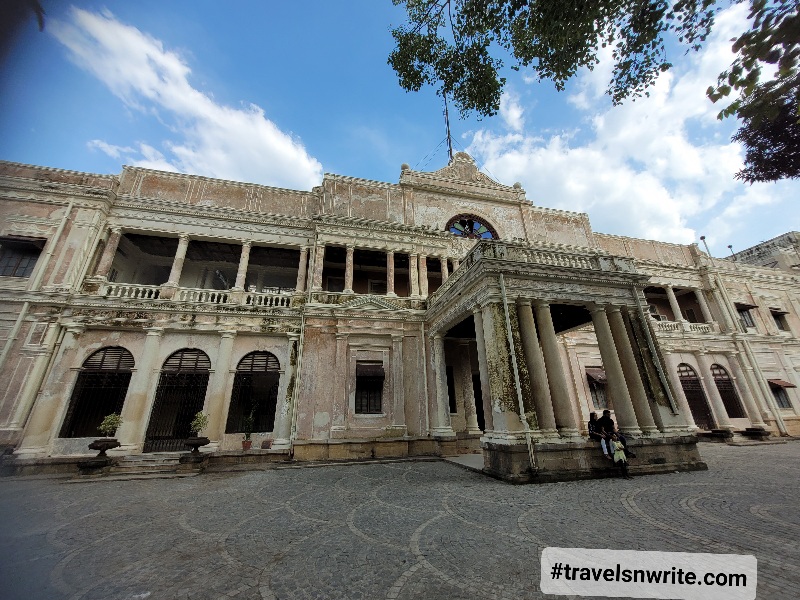Your Indore tour is not complete with out a visit to the iconic Lalbagh Palace. The beautiful palace is a popular tourist attraction that is well worth a visit. The palace was built in the late 19th century for the Maharaja of Indore, and it is known for its stunning architecture and beautiful gardens.
The palace has a blend of European and Indian architectural styles, with features such as grand staircases, intricate woodwork, and stained glass windows. The gardens surrounding the palace are also a highlight, with lush lawns, beautiful flower beds, and a variety of trees and shrubs.
Inside the palace, you can see a range of artifacts and artwork, including paintings, sculptures, and antique furniture. There is also a small museum on the premises that displays items related to the history of Indore.
Overall, Lalbagh Palace is a great place to visit for anyone interested in history, architecture, or simply looking for a beautiful and peaceful setting to explore.
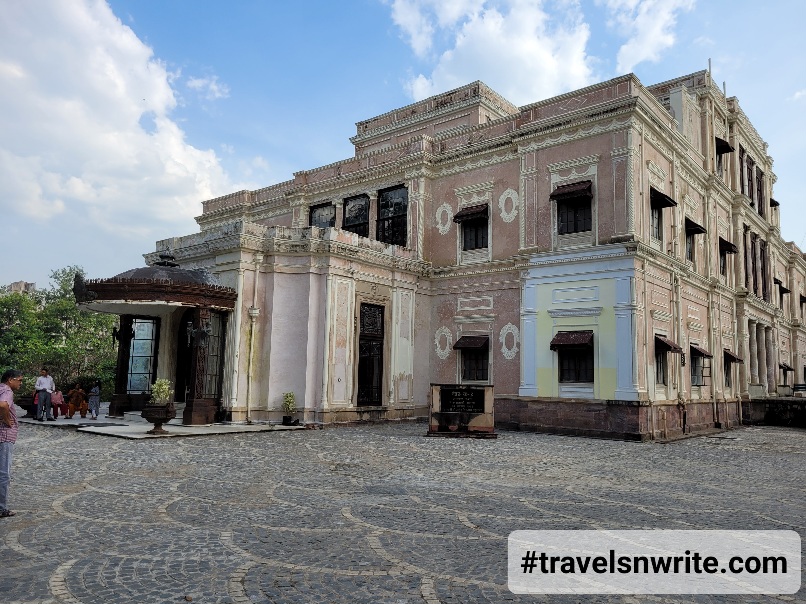
Post Contents
History of Lalbagh Palace in Indore
The 45-room Lalbagh Palace was built over 50 acres of land and took three stages to complete. Beginning with Tukojirao Holkar II, who bought this property in 1886, construction was finished in 1926 by Tukojirao Holkar III, his grandson. It was constructed in the Italian Renaissance Revival architectural style, and Triggs of Calcutta modelled its main gates after those at Buckingham Palace. It once had a 20-acre rose garden.
The palace was turned into a museum after Tukojirao Holkar III passed away in 1978, when his third wife, an American named Sharmishtha Devi (previously Nancy Anne Miller), left the place. A fire severely damaged much of the first floor. Before the state government acquired the land in 1987, the palace had fallen into disrepair and was vulnerable to theft of its antiques.
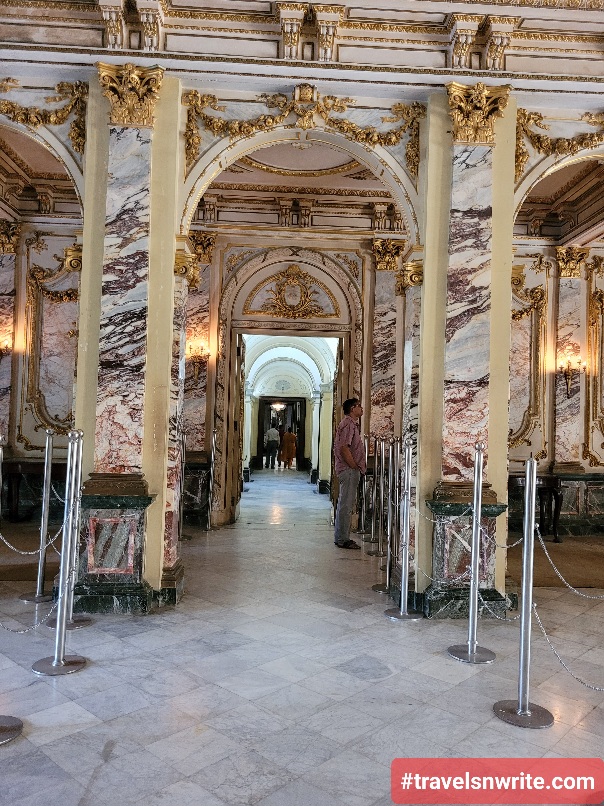
Do Read: The Beauty and Intrigue of Rani Roopmati Mahal: A Visit Worth Taking
Architecture of Lalbagh Palace
The Lalbagh Palace in Indore is an excellent example of Indo-Saracenic architecture, which is a blend of Indian, European, and Islamic styles. The palace is built with red sandstone and has a grand entrance gate that is adorned with intricate carvings. The palace has several courtyards, which are surrounded by lush green gardens and fountains.
The interiors of the palace are equally grand and luxurious, with ornate ceilings, chandeliers, and paintings. The palace has a central hall that is 110 feet long and 50 feet wide, which was used for conducting meetings and hosting grand celebrations. The palace also has a Durbar Hall, which was used for receiving guests and conducting important meetings.
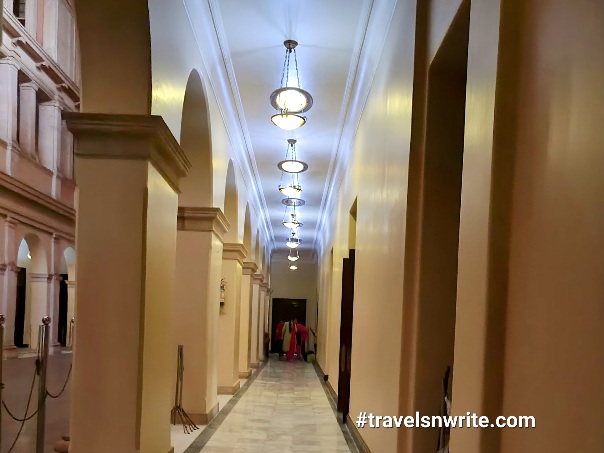
The Lalbagh Palace also houses a museum that showcases the rich cultural heritage of the Holkar dynasty. The museum has a collection of artifacts, including paintings, sculptures, weapons, and musical instruments, which offer a glimpse into the lives of the Holkar dynasty.
Museum of Lalbagh Palace
The Lalbagh Palace Museum is a major tourist attraction in Indore. The museum has a vast collection of artifacts, paintings, sculptures, and other items that showcase the rich history and culture of the region. The museum has six galleries, which display the different collections.
The first gallery has a collection of paintings and sculptures, which depict the life of the Holkar dynasty. The second gallery has a collection of weapons, including swords, guns, and spears, which were used by the Holkar army. The third gallery has a collection of costumes and jewelry, which were worn by the Holkar family.
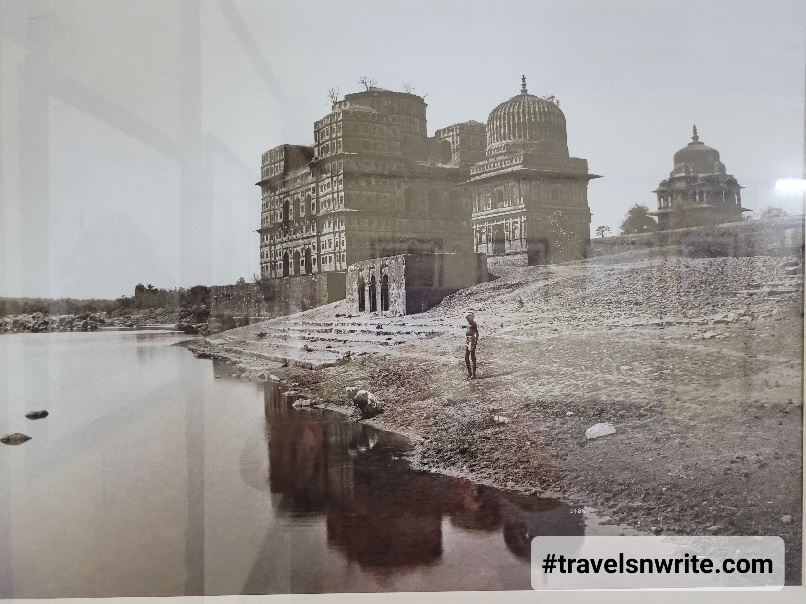
The fourth gallery has a collection of coins, which were used during the Holkar dynasty. The fifth gallery has a collection of rare manuscripts and books, which showcase the rich literary heritage of the region. The sixth gallery has a collection of photographs, which depict the life of the Holkar dynasty.
Visitors can also explore the beautiful garden, which is spread over an area of 28 acres. The garden has a variety of plants and flowers, and is a popular spot for picnics and leisurely walks.
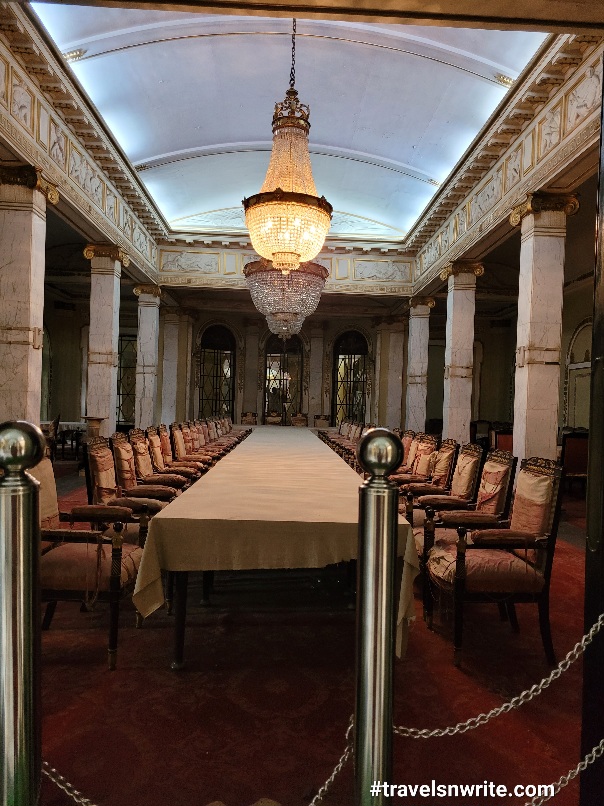
Must Read: Walking Through Time: A Tour of Jahaz Mahal in Mandu
Darbar Hall
The Darbar Hall of Lalbagh Palace is one of the most magnificent rooms in the entire palace. The hall was used for official functions and was the place where the Holkar dynasty held court. The Darbar Hall has a grand entrance, with a magnificent doorway that is decorated with intricate carvings.
The hall is spread over an area of 5,500 square feet and has a height of 23 feet. The hall is decorated with exquisite artwork, paintings, and sculptures. The ceiling of the hall is adorned with beautiful frescoes, which depict the life of the Holkar dynasty. The walls of the hall are decorated with intricate carvings, which showcase the rich cultural heritage of the region.
The Darbar Hall also has a grand throne, which was used by the Holkar dynasty. The throne is decorated with precious stones and is surrounded by beautiful tapestries. The hall also has a large chandelier, which is made of crystal and is one of the largest in India.
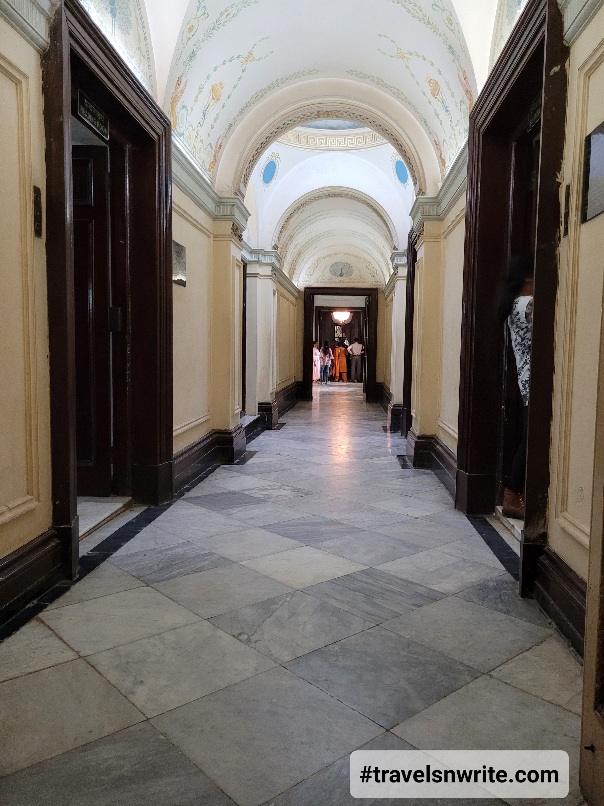
The Darbar Hall has a rich history and has witnessed some of the most significant events in the history of the Holkar dynasty. It was here that the Holkar dynasty held court and conducted their official business. The hall was also used for various royal functions, including weddings and other celebrations.
Today, the Darbar Hall is a major tourist attraction and is one of the most popular rooms in the entire Lalbagh Palace. Visitors can marvel at the exquisite artwork and architecture of the hall, and can learn about the rich history and culture of the Holkar dynasty. The Darbar Hall is a must-visit for anyone interested in the history and culture of the region, and is a testament to the grandeur and opulence of the Holkar
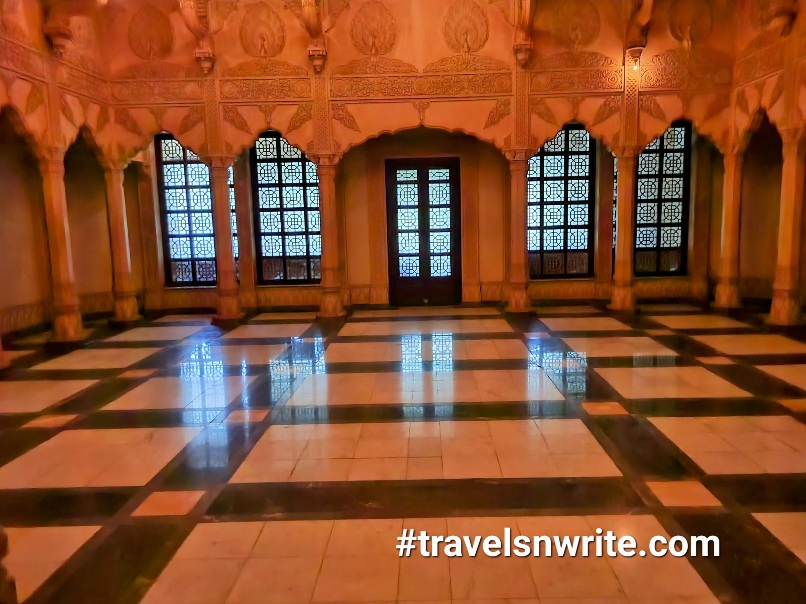
Also Read: Qutub Minar: The Towering Landmark of Delhi
Ballroom of Lalbagh Palace
The ballroom of Lalbagh Palace is one of the most impressive rooms in the palace. It is a grand room, which was used for various royal functions and events, including dances, musical performances, and other celebrations. The ballroom is located on the first floor of the palace and has a magnificent entrance, with a large doorway that leads to the room.
The ballroom is decorated with exquisite artwork, paintings, and sculptures. The ceiling of the room is adorned with beautiful frescoes, which depict scenes from the lives of the Holkar dynasty. The walls of the room are decorated with intricate carvings, which showcase the rich cultural heritage of the region.

The ballroom also has a large dance floor, which is made of teakwood and is one of the largest in India. The dance floor is surrounded by beautiful tapestries and curtains, which were specially imported from Europe. The ballroom also has a large chandelier, which is made of crystal and is one of the most beautiful chandeliers in India.
The ballroom was used for various royal functions and events, including weddings, receptions, and other celebrations. The Holkar dynasty was known for their love of music and dance, and the ballroom was a place where they could showcase their skills.
Today, the ballroom is one of the most popular rooms in the Lalbagh Palace and is a must-visit when you are visiting the palace. Visitors can marvel at the exquisite artwork and architecture of the room,
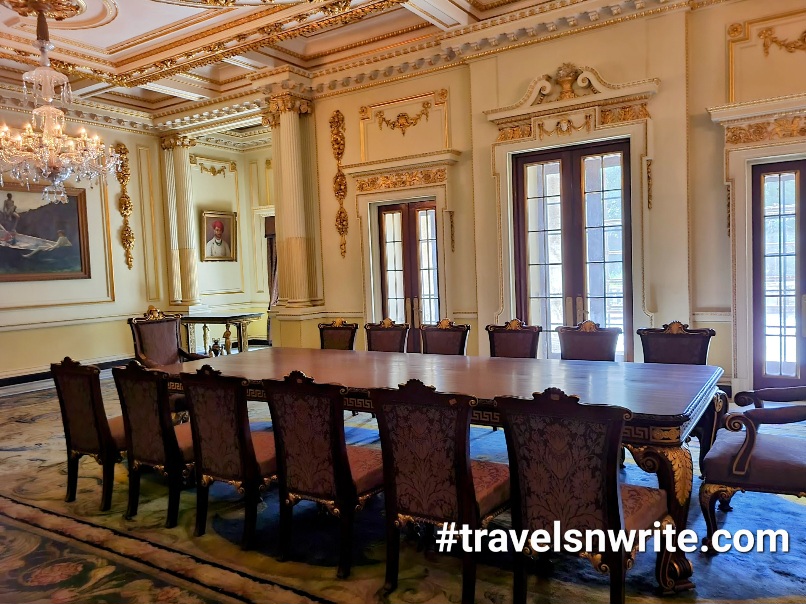
Do read: Visiting the spectacular and peaceful Lotus Temple in Delhi
Chandeliers at the Lalbagh Palace
One of the most striking features of the palace is its collection of chandeliers. These chandeliers are made of crystal and are some of the most beautiful chandeliers in India.
The chandeliers are located in various rooms of the palace, including the ballroom, Darbar Hall, and dining room. Each chandelier is unique and has its own style and design. Some of the chandeliers have intricate patterns and designs, while others are simpler in their design.
The chandeliers in the ballroom are particularly impressive. The ballroom has a large dance floor, which is surrounded by beautiful tapestries and curtains. The chandelier in the ballroom is massive and has several tiers of crystals, which reflect light in all directions. The chandelier adds to the grandeur and opulence of the ballroom and is a testament to the love of music and dance of the Holkar dynasty.
The chandeliers in the Darbar Hall are also impressive. The Darbar Hall was used for official functions and was the place where the Holkar dynasty held court. The chandeliers in the Darbar Hall are smaller in size, but no less impressive. They are designed to complement the beautiful artwork and architecture of the room.
The dining room of Lal Bagh Palace also has a beautiful chandelier. The dining room was used for formal dinners and other events. The chandelier in the dining room is designed to reflect light off the polished table and add to the grandeur of the room.
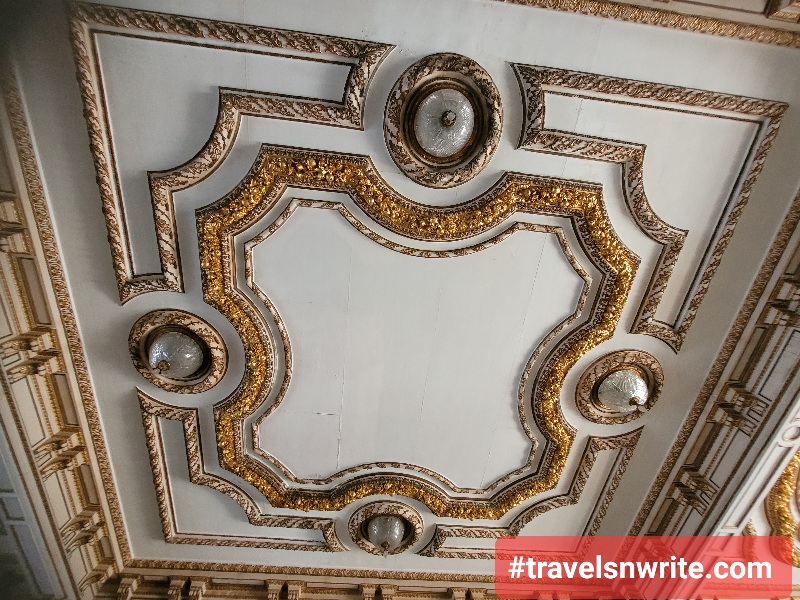
Restoration of Lalbagh Palace
The restoration of Lalbagh Palace in Indore is a significant project that has caught the attention of the World Monuments Fund (WMF). The WMF is a non-profit organization that is dedicated to protecting and preserving cultural heritage sites around the world.
The Lal Bagh Palace is a stunning 19th-century palace that was built during the Holkar dynasty. Over the years, the palace fell into disrepair and was in desperate need of restoration. In recognition of its cultural importance, the WMF included the palace on its watch list of endangered heritage sites.
To address the pressing need for restoration, the WMF worked closely with the Indian government and local stakeholders to develop a comprehensive restoration plan. The restoration project was aimed at preserving the palace’s historic fabric while making it safe and accessible for visitors.
The restoration plan included a range of conservation activities, including the stabilization of the palace’s structural elements, the repair of the palace’s ornate decorative features, and the restoration of its intricate frescoes and murals. In addition to these conservation activities, the restoration project also focused on improving the palace’s infrastructure, such as its electrical and plumbing systems, to ensure its long-term sustainability.
Thanks to the efforts of the WMF and its partners, the restoration of Lalbagh Palace has been a great success. The palace has been transformed into a vibrant cultural center, attracting visitors from around the world. Today, the palace serves as a testament to India’s rich cultural heritage and is a shining example of the positive impact that restoration can have on historic sites.
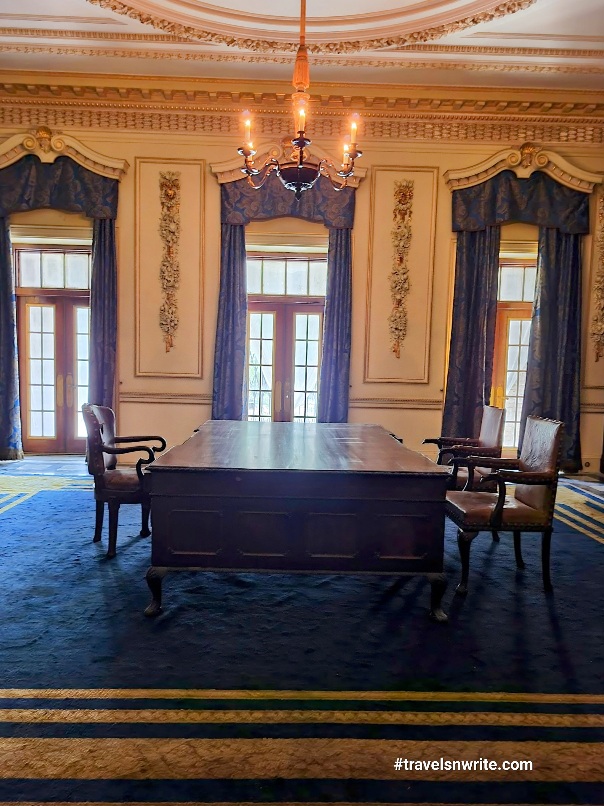
Do Read: Your Ultimate Guide to visit Mahakaleshwar Temple in Ujjain
Travel Tips
If you’re planning to visit Lal Bagh Palace in Indore, here are some travel tips that may be helpful:
- Timing: Lal Bagh Palace is open to visitors every day from 10 am to 5 pm, except on Mondays and public holidays.
- Photography: Photography is allowed at Lal Bagh Palace, but some areas may be restricted. Be sure to check with the staff before taking any photos.
- Guided tours: Guided tours are available at the palace, and are highly recommended. They provide a great way to learn more about the history and architecture of the palace, as well as its cultural significance.
- Accessibility: Some areas of the palace may not be easily accessible for visitors with mobility issues, as there are stairs and uneven surfaces. However, there are some areas that are accessible, so be sure to ask the staff for assistance if needed.
- Respect for the monument: Lal Bagh Palace is a significant cultural landmark, so be sure to treat it with respect. Avoid touching or damaging any of the historic features, and follow any instructions provided by the staff.
- Nearby attractions: There are several other attractions in the area that are worth visiting, including the Indore Museum, Rajwada Palace, and Kanch Mandir.

